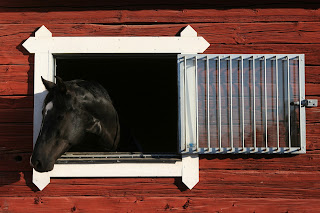I soon developed a "folder office," meaning I took two pocketed folders (probably ones with photos of cute kittens on them) and opened them each to 90° angles, making a corral for me to work within.
I remember my teacher, Mrs. Hunnicutt, protesting at first, but soon she began to realize there was no harm in my invention. A few of my classmates soon followed suit, and the classroom actually grew quieter as we shrunk into our own private workspaces during independent work.
Think of the same thing but on a little bit larger scale, and you have "mini offices" outfitted for the homeschool setting. You can use file folders (think an extension of lapbooks) -- or something a little larger, like science presentation boards. We used the latter, but cut ours in half width-wise so that they would fit on top of the dining room table. Both kids have two; one is for language arts, Bible and geography, and one is for math and "miscellaneous."
I found many of the printables via this helpful article about mini offices. A quick search on Pinterest yielded more. I framed many with cardstock and then laminated them. The great thing about science presentation boards is that you can tape the objects to the board and then move them around without ripping the cardboard; it's made for moving things around. We can change the boards as the academic needs change through the school year.
(This board has: The US presidents, a US map, days of the week, months of the year, books of the Bible, and parts of speech.)
(Miss Artsy's has the same, as well as a punctuation chart and an alphabet chart.)
(Mr. Tinker's math and miscellaneous board has a "today is" write on/wipe off sign, "What I'm Memorizing" sleeve that we can switch out depending on the poem he's working on currently, math equivalent charts, and fraction strips.)
(Miss Artsy's math board has a number line, 100 chart, 3D geometric solids chart, shapes chart, money chart, tally marks chart, and (not pictured, on both hers and her brother's), a "What I'm Creating" sleeve, which lets them rotate out their current pieces of favorite artwork for display.)













